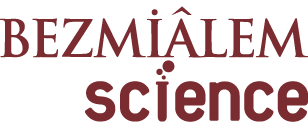ÖZET
İyon kanallarının oluşumunu kodlayan genlerde meydana gelen mutasyonlar epileptik sendromlara neden olabilir. Bu epileptik sendromlar genel olarak jeneralize ve parsiyel olarak ikiye ayrılmaktadır. Kendi içerisinde mendelyan ve non-mendelyan geçiş gösteren jeneralize epilepsilere neden olan etkenler arasında sodyum kanalı, kalsiyum kanalı, GABAA reseptör ve nikotinik reseptör mutasyonları gösterilebilir. Mendelyan geçiş gösteren jeneralize epilepileptik sendromlar; febril nöbetler ile karakterize, otozomal dominant formlu juvenil miyoklonik, CLCN2 gen mutasyonuyla ilişkili, kalsiyum kanalı alt birimlerindeki mutasyonlarla ilişkili epilepsiler şeklinde farklılaşmaktadır. Non-mendelyan geçiş gösteren jeneralize epileptik sendromları ise juvenil miyoklonik ve juvenil absans jeneralize tonik-klonik nöbetli epilepsilerdir. Parsiyel özellik gösteren tek gen kalıtımı ile gerçekleşen Yenidoğan ve Süt Çocuğu Epilepsileri, Selim Ailesel Neonatal, Selim Ailesel İnfantil Konvülzionlar ve Selim Ailesel Neonatal-İnfaltil Nöbetler başlıklarıyla 3 sınıfta toplanmaktadır. Otozomal dominant parsiyel epilepsiler ise Otozomal Dominant Noktürnal Frontal Lob, Ailesel Meziyal Temporal Lob, Ailesel Lateral Temporal Lob, Değişken Odaklı Ailesel Parsiyel Lob Epilepsisi başlıkları altında incelenmektedir. Farklı iyon kanallarında meydana gelen çeşitli mutasyonlar benzer fenotipler oluşturabilirken, aynı gen üzerinde meydana gelen belli bir mutasyon da farklı fenotiplere neden olabilir. Bu derleme epileptik sendromlara neden olan nöral kanalopatilerin genetik tabanı ve patofizyolojik etkileri üzerinden epilepsi sınıflandırmasına ait bir özet sunmaktadır.



